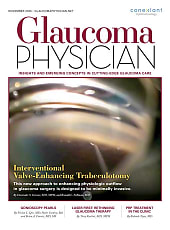While artificial intelligence (AI)-powered screening has been validated for diabetic retinopathy, applying the technology to glaucoma has proved more challenging because glaucoma is not one disease. A glaucoma diagnosis is based on a constellation of symptoms, diagnostic tests, and longitudinal data. However, investigation into the possibility of using AI to screen for glaucoma continues unabated because it holds enormous potential to improve screening for one of the most underdiagnosed causes of vision loss in the world. A new study presented at the 129th annual meeting of the American Academy of Ophthalmology adds to the expanding body of research. It shows that a machine learning algorithm was more accurate than trained human graders in identifying patients at risk for glaucoma, the AAO noted in a press release.
Researchers at the University College London Institute of Ophthalmology and Moorfields Eye Hospital used 6,304 fundus images gathered for a large, population-based cohort study (EPIC-Norfolk Eye Study) to compare the accuracy of their algorithm and a trained human grader to estimate a key measure of glaucoma, vertical cup-disc ratio. A glaucoma specialist examined the patients to confirm the diagnosis.
Results showed the algorithm correctly identified patients with glaucoma 88 to 90% of the time; human graders were correct 79 to 81% of the time. The algorithm did not differentiate between those who had glaucoma or might have glaucoma.
The authors say their study stands out from previous studies because the algorithm was tested on a cohort of patients that more closely mirrors the range of patients that would be seen during a routine screening, as only 11% of eyes in the data set were glaucoma suspects.
Lead researcher Anthony Khawaja, PhD, FRCOphth, said he was surprised to see the degree to which machine learning outperformed the human testers. He’s hopeful it could eventually be used as a cost-effective tool for an initial glaucoma screening. Although Dr. Khawaja notes that a screening process could augment the algorithm’s accuracy by including other indicators of glaucoma risk, such as intraocular pressure.
“Glaucoma remains one of the most common causes of vision loss that can't be repaired globally," Dr. Khawaja said in the press release. "To date, screening is too expensive for glaucoma, but I hope that artificial intelligence solutions, in combination with other approaches such as targeting by genetic risk, will be the solution.”








